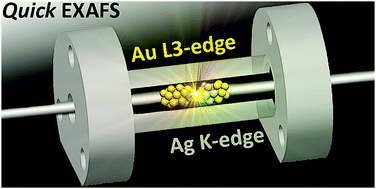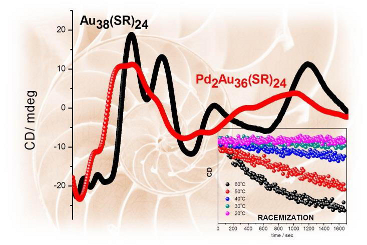-
On the mechanism of rapid metal exchange between thiolate-protected gold and gold/silver clusters: a time-resolved in situ XAFS study
B. Zhang, O.V. Safonova, S. Pollitt, G. Salassa, A. Sels, R. Kazan, Y. Wang, G. Rupprechter, N. Barrabés and T. Bürgi
Physical Chemistry Chemical Physics, 20 (7) (2018), p5312-5318


DOI:10.1039/C7CP08272J | Abstract | Article HTML | Article PDF | Supporting Info

The fast metal exchange reaction between Au38 and AgxAu38−x nanoclusters in solution at −20 °C has been studied by in situ X-ray absorption spectroscopy (time resolved quick XAFS) in transmission mode. A cell was designed for this purpose consisting of a cooling system, remote injection and mixing devices. The capability of the set-up is demonstrated for second and minute time scale measurements of the metal exchange reaction upon mixing Au38/toluene and AgxAu38−x/toluene solutions at both Ag K-edge and Au L3-edge. It has been proposed that the exchange of gold and silver atoms between the clusters occurs via the SR(-M-SR)n (n = 1, 2; M = Au, Ag) staple units in the surface of the reacting clusters during their collision. However, at no point during the reaction (before, during, after) evidence is found for cationic silver atoms within the staples. This means that either the exchange occurs directly between the cores of the involved clusters or the residence time of the silver atoms in the staples is very short in a mechanism involving the metal exchange within the staples.



